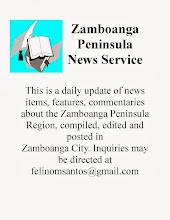DA Regional Director Constancio Alama told the Philippine News Agency these measures include color coding of the soil, defining of rainfall pattern, and planting of drought and flood-resistant crops.
Alama said color coding of the soil is done based on the outcome of the study on its fertility and climate pattern to determine what variety of crops would be planted in a particular area.
“This will ensure that the right variety of plants will be planted in the area, including fertilizers to be used,” Alama said.
He said they already have the rice variety that is drought and flood-resistant, and low fertilizer requirement.
He added that the Bureau of Soils and Water Management (BSWM) is now plotting the color coded map based on soil sampling they conducted in the last quarter of 2016.
He said they are also consolidating data gathered for the past five years, to identify the rainfall pattern of the region. (PNA)
FPV/TPGJR/RGAAG
FPV/TPGJR/RGAAG







0 comments:
Post a Comment